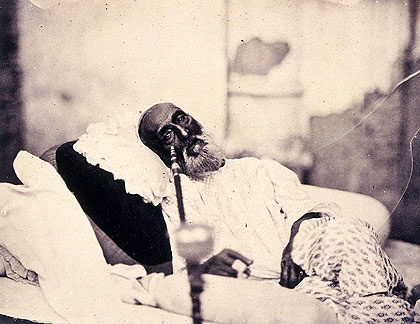The time periods you mention, I seriously doubt that the subcontinent was under centralized control, nevermind be homogeneously called India.
The largest construction projects obviously took place when the subcontinent was politically unified. India was politically unified only three times during the 2,000 year period I mentioned: under the Mauryas (330-180 B.C.E.), Guptas (320-600 C.E.), and Mughals (1526-1858 C.E.). The Guptas only unified North India under their direct rule, but I included them anyway because this was considered India's "Golden Age" where most of the scientific and technological advances were made, and South India consisted of allies/vassals of the Guptas anyway.
However, plenty of construction projects were also undertaken by smaller, local kingdoms. For example, the Cholas of Tamil Nadu, the Palas of Bengal, and the Kakatiyas of Andhra Pradesh.
As you point out yourself that there is a gap of 250 years 700-1950 where no such large scale project took place.
Under the British rule, numerous railroads were built throughout Indian Subcontinent. Even these were built so that the British could rape India more easily, they still proved an invaluabe infrastructure asset for post-independent India. Even today the British-built railroads are probably the most important part of India's infrastructure grid.
Also, what Chinese infrastructure projects were undertaken between 1700 and 1950? I am asking because I don't know.
Lastly what are specific examples of "Large-scale Indian construction", I ask because I don't know Indian history that well.
I'll try to include examples of a variety of construction projects from different eras.
The Great Kaveri Dam in Tamil Nadu, constructed in the 1st century C.E.
Madurai-Meenkashi Temple Complex, also in Tamil Nadu
The ruined War Elephant Stables in Hampi, ancient capital of the Vijayanagara Empire.
Mehrangarh Fort in Jodhpur
I might post more pics later. There are plenty of large temples all over India which were built thousands of years ago. Modern-day Indian contractors lack a fraction of the skill posessed by their ancient counterparts in terms of managing the division of labor and costs of construction.














